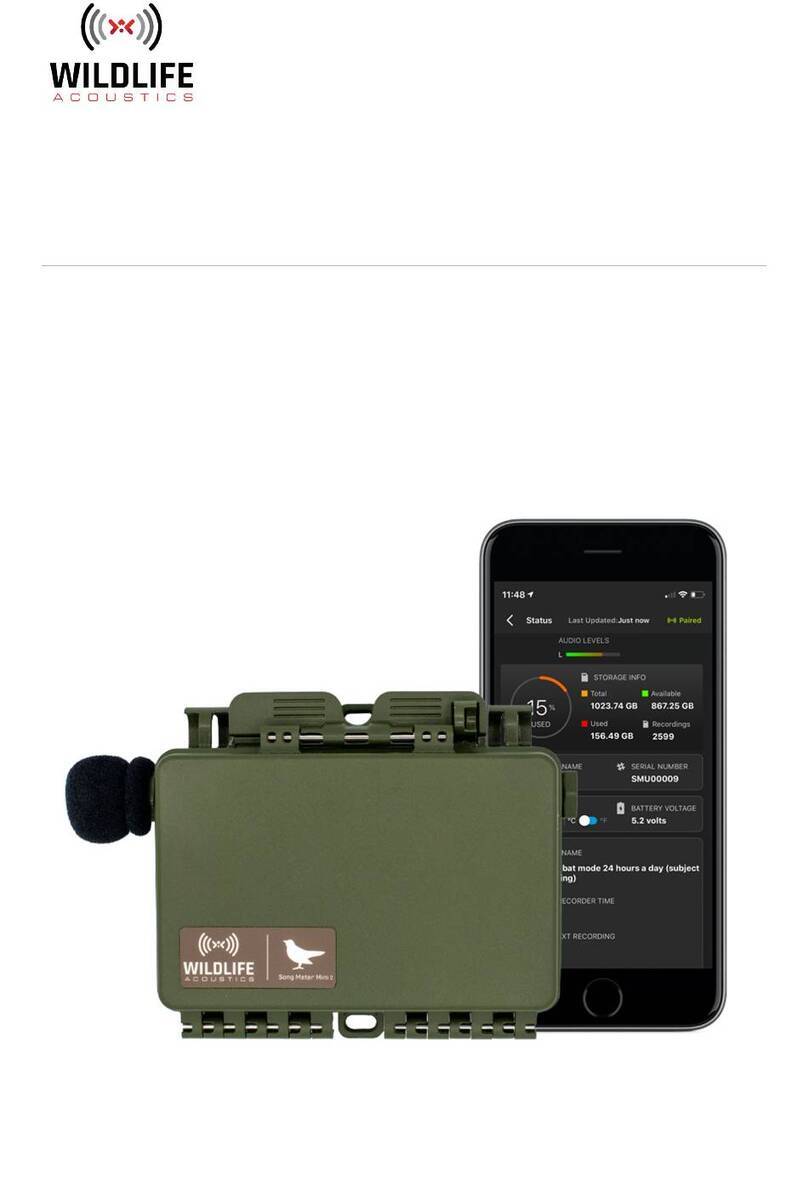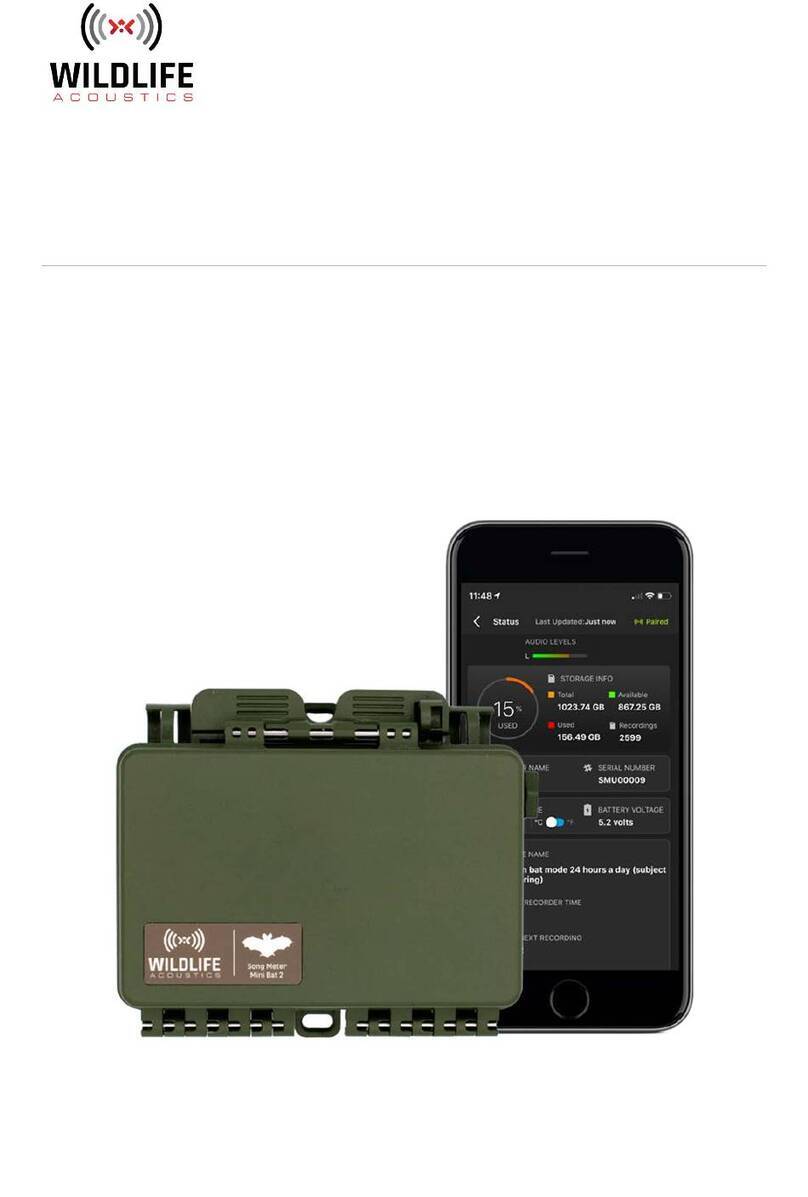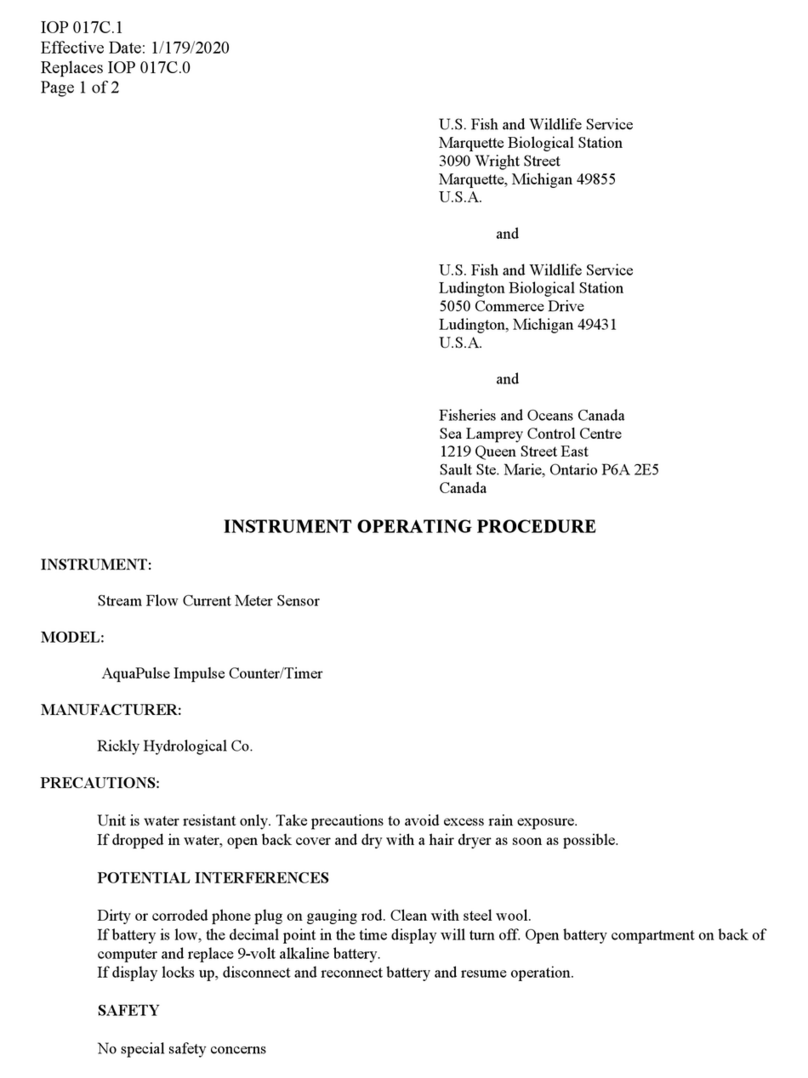
IOP 019A.1
Effective Date: 1/11/2017
Page 10 of 11
A. Short term storage
The cable assembly is supplied with a sensor storage container, or sleeve, that attaches to
the cable. The container is used for short-term storage (less than 7 days). Be sure to keep
a small amount of moisture (tap water) in the container during storage. This is done to
maintain a 100% saturated air environment which is ideal for short-term sensor storage.
The sensors should not be submersed in water. The intent is to create a humid air storage
environment.
B. Long term storage
1. Temperature sensor - No special storage is required. The temperature sensor can
be stored dry or wet as long as solutions in contact with the thermistor are not
corrosive (for example, chlorine bleach).
2. Conductivity sensor - No special storage is required. Sensors can be stored dry
or wet as long as solutions in contact with conductivity electrodes are not
corrosive (for example, chlorine bleach). However, it is recommended that the
sensor be cleaned with the provided brush prior to and after long term storage.
3. Dissolved oxygen sensor - Dissolved oxygen sensors should be stored in a dry
state for long term storage. First, remove the membrane cap and thoroughly
rinse the sensor with clean water. Next, either blow it dry with compressed air or
allow to air dry completely. Install a clean, dry new membrane cap over the
sensor to keep it dry and to protect the electrodes. After storing the sensor for a
long period of time, it is necessary to “condition” the sensor by putting a new
membrane with electrolyte solution on the sensor and then turning the
instrument on to allow the sensor sufficient time to stabilize.
4. pH sensor - The key to pH sensor storage, short or long-term, is to make certain
that the sensor does not dry out. Sensors which have been allowed to dry out due
to improper storage procedures may be irreparably damaged by the dehydration
and will require replacement. You can try to rehydrate the sensor by soaking it
(preferably overnight) in a potassium chloride solution or a pH 4 buffer before
attempting to calibrate. To store the sensor, remove it from the cable and seal the
vacant port with a port plug. Fill the original shipping/storage vessel (plastic
boot or bottle) with buffer 4 solution and then submerge the sensor into the
solution. The sensor should remain submerged in the solution during the storage
period; therefore, make certain that the vessel is sealed to prevent evaporation
and periodically check the vessel to ensure the sensor does not dry out.
5. Ammonium sensor - The key to ISE sensor storage, short or long-term, is to
make certain that the sensor does not dry out. Sensor junctions that have been
allowed to dry out due to improper storage procedures may be irreparably
damaged by the dehydration and will require replacement. You can attempt to
rehydrate the sensor by soaking it (preferably overnight) in the sensor’s high
calibration solution before attempting to calibrate. The recommended storage of
these sensors is in moist air. Remove the sensor from the cable and seal the
vacant port with the provided plug. Place the sensor in its original shipping
storage vessel (plastic boot or bottle) with a small amount of tap water or its
high calibration standard. The vessel should remain a saturated air environment.
The sensor only needs to be kept in moist air, not submerged. Make certain that
the vessel is sealed to prevent evaporation.
MAINTENANCE:

































